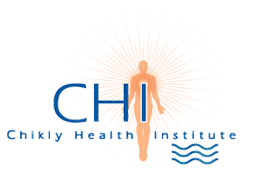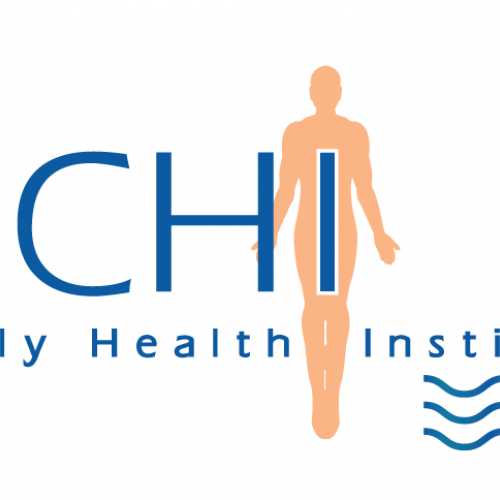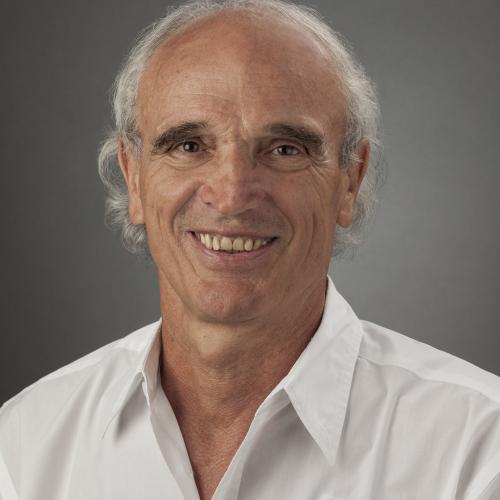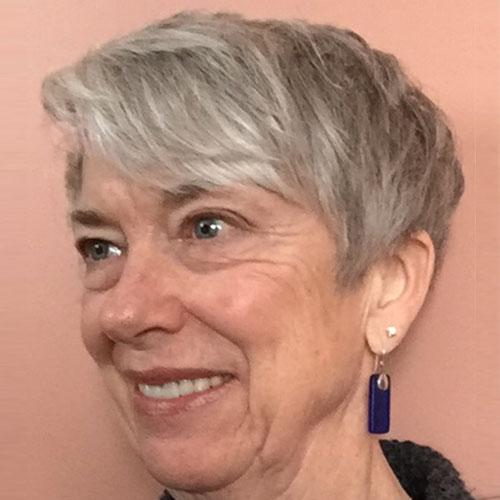The Brain Therapy Curriculum is an advanced-level course that takes us to the next realm of manual therapy. It explores the brain, spinal cord, white matter, grey matter, and also in this level brain nuclei such as corpus callosum, septum pellucidum, indusium griseum, fornix, thalamus, globus pallidus, amygdala, hippocampus, brainstem, cerebellum, etc.
The body often aligns itself around these precise structures, and they are frequently unaddressed key/dominant tissue restrictions.
The techniques presented in this Course can probably help most of your patients, but it can specifically help pathologies such as closed-head injuries, whiplash, headaches, dyslexia, cerebral palsy, cognitive behavioral dysfunctions, learning disabilities, ADD/ADHD, Parkinson's and Alzheimer's disease. Students will learn specific techniques to release brain-centered restrictions as well as the damaging effects that these restrictions cause.
Brain 1 is an advanced class that uses a slightly different paradigm by working extensively with the brain parenchyma, grey and white matter, cranial and spinal structures, rather than mainly concentrating on the cranial bones and membranes.
This work requires perceptual skills to be able to address tissue microstructures, and we will have specific exercises in the class to help build up these skills.
This class will propose different ways to release these structures, and once learned, you will understand how these structures are repeatedly one of the most important, and yet least often addressed components of somatic dysfunctions.
Many topics will be covered in the Brain Therapy classes, in general, including:
- 1. Cranial bones (intraosseous and interosseous lesions)
- 2. Cranial membranes in all anatomical directions
- 3. Fluid: 3 distinct compartments
- a. Subarachnoid spaces and cerebral cisterns
- b. Brain parenchyma and the glymphatic system
- c. Ventricles
- 4. Grey Matter: 3 and 6 layered cortex and brain nuclei
- 5. White Matter: 3 types of organization
- 6. Electromagnetic field (EMF) of the brain
- 7. Emotions, as well as mental or spiritual dimensions.
I know that the normal brain lives, thinks, and moves within its own specific membranous articular mechanism." - Sutherland WG, The Cranial Bowl, Free Press, First Edition, 1939, reprint 1994, pp 51.
Class length 4 days
CEUs 24 hours for numerous professions (please see CEU page)
Conflict of Interest: All classes presented by Chikly Health Institute have no financial conflict of interest.
CHI is not sponsored by outside organizations or corporations.
Please read "Our Policies" for more information: https://chiklyinstitute.com/Policies
• Contact Continuing Education (CE) Hours Total: 24 CEUs for massage therapists - NCBTMB Approved Provider # 451238-10
NCBTMB CEUs are accepted in every US state for NCBTMB certification renewal.
Most states accept NCBTMB for license renewal but not all. We are also an approved provider for NY state.
Please look here for more information: http://www.ncbtmb.org/map/requirements-map.
Because certification and license renewal policies vary from state to state, it's important for you to make sure the CEUs are accepted wherever you practice. Therefore, please be aware that this information may not apply in your state.
Check your state’s website at: http://www.ncbtmb.org/regulators/state-info.
Alberta massage therapists: Members of the RMTA will receive 19 Continuing Education Credits (CEC) upon the submission of a certificate of completion for each course.
• States Approved for PTs: 24 CEUs
Alabama, Alaska, Arizona, Connecticut, Georgia, Iowa, Kansas, Michigan, Missouri, Montana, Nebraska, New Mexico, North Carolina, North Dakota, New Jersey, Oregon, South Carolina, South Dakota, Texas, Utah, Vermont, Virginia, Washington, West Virginia, Wisconsin, Wyoming
• 24 hours approved by the Massage Therapy Association of Manitoba, Canada (MTAM)
• 20 hours approved by the Certified Registered Massage Therapy Association of Alberta, Canada (CRMTA)
We are in the process of providing Continuing education for numerous other professions. Please check back to this page later as we will post all updates.
- Identify and access very precise areas of the brain that hold primary lesions and trauma
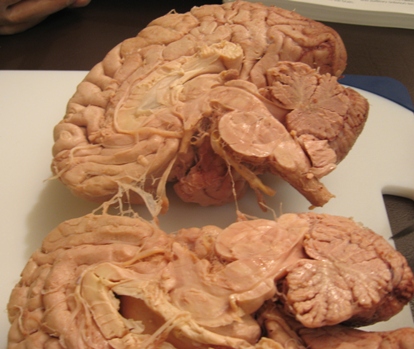
- Explore methods for dealing with tissue trauma and cellular fear
- Discover techniques to help release restrictions in more than 20 brain nuclei, including the corpus callosum, fornix, thalamus, amygdala, hippocampus, hypothalamus, pituitary, and substantia nigra
- Gain techniques for fluid dynamics and nuclei related to the ventricular fluid system, lateral, 3rd, and 4th ventricles, and central canal of the spine
- Learn a gentle and respectful technique to release the whole brain and spinal cord parenchyma
- Discover the suggested protocol for brain and spinal cord dysfunctions
INSTRUCTIONAL METHODS
- Lecture
- Study Guide
- Question & Answer
- PowerPoint Slides
- Demonstration
- Practice sessions
- Review
CLASS OUTLINE (Subject to Change)
Day One
8:30 Registration
9:00 - 11:00 - Introduction, teachers, students, teaching assistants, and facilitator
- Teaching material
- Autonomic nervous system/trauma/upregulation/downregulation: theory and scientific evidences
11:00 - 11:15 Break
11:15 – 12:00 - Release autonomic nervous system/trauma/downregulation technique practice
12:00 - 12:30 - Determine the location of an autonomic nervous system/trauma dysfunction in the face or cranium
12:30 - 2:00 Lunch
2:00 – 3:30 - Brain Ventricles technique and central canal of the spinal cord
3:30 - 3:45 Break
3:45 - 5:30 - Microanatomy and microphysiology techniques
Day Two
9:00 - 11:00 - Review, questions, and answers
- Brain nuclei: corpus callosum, septum pellucidum, fornix, indusium griseum
11:00 - 11:15 Break
11:15 - 12:30 - Brain nuclei: basal nuclei, caudate nucleus, globus pallidus, putamen, claustrum, insula of Rheil (Reil)
12:30-2:00 Lunch
2:00 - 2:30 - Brain nuclei: clinical case
2:30-3:30 - Brain nuclei: thalamus, pulvinar, interthalamic adhesion
3:30 - 3:45 Break
3:45 - 5:30 - Brain nuclei: hippocampus, amygdala
Day Three
9:00 – 9:45 am - Review, questions, and answers
- Brain nuclei: hypothalamus, pituitary
9:45 am – 10:30 am - Brain nuclei: mammillary bodies, olfactory nerves, substantia nigra, red nucleus, ventral tegmental area (VTA)
10:30 - 10:45 Break
10:45 - 12:30 - Brain nuclei: cerebellum: intra, inter and cerebro-cerebellar lesions. cerebellar nuclei
12:30 - 2:00 Lunch
2:00 – 3:30 - Brain nuclei: pineal / habenula
3:30 - 3:45 Break
3:45 - 5:30 - Universal Rhythm Lab
- Motility and release of the brain parenchyma
Day Four
9:00 - 10:30 - Review, questions, and answers
- Release of the brain/mobility: anterior release
10:30 - 10:45 Break
10:45 - 12:30 - Release of the brain/mobility: posterior release
12:30 – 1:30 Lunch
1:30 – 2:45pm - Release of the spinal cord/mobility
- Final questions and answers.
- Take home protocol.
- Self-reflection and identification of changes for practitioner’s practice.
LEARNER’S OBJECTIVES (Subject to Change)
DAY 1:
- By the end of the 1st-day participants will be able to correctly explain the scientific theory of autonomic nervous system upregulation and downregulation in relation to physical trauma
- By the end of the course participants will be able to correctly determine on a live person’s face or cranium at least one specific area with autonomic nervous system dysregulation
- By the end of the course participants will be able to correctly demonstrate on a live person Brain 1 ventricles technique
- By the end of the course participants will be able to correctly demonstrate on a live person one microanatomy technique
DAY 2:
- By the end of the course participants will be able to correctly demonstrate on a live person one technique on corpus callosum
- By the end of the course participants will be able to correctly demonstrate on a live person one technique on fornix
- By the end of the course participants will be able to correctly demonstrate on a live person one technique on basal nuclei
- By the end of the course participants will be able to correctly demonstrate on a live person one technique on the thalamus
- By the end of the course participants will be able to correctly demonstrate on a live person one technique on the hippocampus
DAY 3:
- By the end of the course participants will be able to correctly demonstrate on a live person one technique on pituitary
- By the end of the course participants will be able to correctly demonstrate on a live person one technique on mammillary bodies
- By the end of the course participants will be able to correctly demonstrate on a live person one technique on substantia nigra
- By the end of the course participants will be able to correctly demonstrate on a live person one global technique on the cerebellum
- By the end of the course participants will be able to correctly demonstrate on a live person one technique on the cerebellum nuclei
- By the end of the course participants will be able to correctly demonstrate on a live person one technique on the pineal
DAY 4:
- By the end of the course participants will be able to correctly demonstrate universal rhythm techniques on the brain
- By the end of the course participants will be able to correctly demonstrate how to release the brain mobility
- By the end of the course participants will be able to correctly demonstrate how to release the spinal cord mobility
LDT1 OR A TOTAL OF 3 hands-on classes in ANY of the following curriculi, in ANY combination: Cranio-Sacral Therapy - CST (Upledger), Visceral Manipulation/Neural Manipulation (Barral) except dissection classes.
Being in clinical practice, have strong preparation in neuroanatomy, good proprioception, and being able to use a subtle touch.
Advanced practitioners with significant training and clinical experience in neuroanatomy and refined/fluid techniques may be eligible to take this workshop without pre-requisite classes (e.g., Osteopath, MD)
If you think you qualify, please complete the "Application for Exception" to submit to the developer.
The Reason for the prerequisite combinations
The brain is a delicate and sentient structure. Having advanced skills for this class, heightened sensitivity, and in-depth knowledge is important.
The brain is an "interface" between structure and function; its structures are extremely sensitive and conscious. The clarity of the practitioner has an important effect on the treatment and response of the brain tissue. The practitioner must be able to hold a pure space to safely and successfully do this work.
We also strongly recommend taking a dialoguing class to enhance your practice as well as your personal growth, even if you have already qualified without these classes. Your dialoguing skills will be essential in B3 when we work with the Autonomic Nervous System.
One CHI Dialoguing class Brain students have found beneficial is Heart Centered Therapy. Heart Centered Therapy (HCT) elements are important to know as you connect to brain tissue. HCT is a non-invasive modality that allows the practitioner to create a safe and sacred space and connect from the resonance field of their "heart."
It prepares the practitioner to be an objective, compassionate witness to the process of patient-client. It empowers the facilitator to clear the emotional and spiritual component of trauma that may still be held in the tissue, as well as the related dissonant patterns held by the family, ancestral, and cultural lineage. These skills and principles have supported and imprinted this work, enabling us to more deeply understand the importance of a loving, respectful, and conscious touch.
Advanced study of anatomy is required.
It is of utmost importance that you prepare for this class as far in advance as possible. Many students feel it is never too early to begin the study of neuroanatomy structures.
This DVD will show you structures such as the ventricular system, the brain parenchyma; the major components (nuclei) of the brain and spinal cord, including the corpus callosum, fornix, thalamus, putamen, globus pallidus, caudate nucleus, amygdaloid bodies, hippocampus, mamillary bodies, red nucleus, substantia nigra, pituitary, hypothalamus, cerebellum, and associated nuclei, cauda equina, conus medullaris, filum terminale.
You will be spending class time reviewing specific areas of the central nervous system. You, therefore, need to pay particular attention to the anatomy (and physiology) of the brain and spinal cord, along with the central nervous system, as you prepare for class.
For this class, it is more important to know the 3-dimensional location of a brain structure and its relationship to the surrounding structures than its classical described physiology.
You should review some books, such as "Netter's Atlas of Human Neuroscience" (see references below).
Terminology
We have provided a list of terms you need to study before attending this course.
It is very important for you to be familiar with the following words and concepts.
Anatomical/Physiological Terms
- All cranial bones, meninges, and associated structures
- Structure and physiology of brain ventricles: frontal horn, temporal horn, occipital horn, central part, interventricular foramen of Monro, optic recess, interthalamic adhesion, aqueduct of Sylvius, foramen of Luschka, foramen of Magendie, choroid plexus of lateral, third, and fourth ventricles, and central canal of the spinal cord
- Major structures of the brain, including corpus callosum, septum pellucidum, indusium griseum, fornix, thalamus, pulvinar, interthalamic adhesion, putamen, nucleus accumbens, globus pallidus, lentiform nucleus, caudate nucleus, basal ganglia, internal capsule, external capsule, claustrum, limbic system, amygdala, hippocampus, mamillary bodies, brain stem, hindbrain, medulla oblongata, pons, diencephalon, mesencephalon, cerebellum and associated nuclei (fastigial, globose, emboliform, dentate), red nucleus, substantia nigra, pituitary (hypophysis), hypothalamus and its numerous nuclei, pineal(epiphysis), locus ceruleus, colliculus, and geniculate bodies.
- Astrocytes, oligodendrocytes, microglia, ependyma, organelles, cell membrane, cytoplasm, nucleus, centriole (centrosome/basal bodies), Golgi apparatus or Golgi complex, ribosome (ribonucleoprotein), Endoplasmic reticulum (ER), mitochondria, granule/vesicle/vacuole, microfilaments (actin filaments), intermediate Filaments, microtubules, extracellular matrix (ground substance) (You can use "Silent Waves" Part 6, Chapter 3 as a reference for this topic).
Pathologies
Be sure you are familiar with the following pathologies: closed-head injuries, whiplash, dyslexia, cerebral palsy, cognitive behavioral dysfunctions, learning disabilities, ADD/ADHD, Alzheimer's, and Parkinson's.
List of words from Netter's Atlas of Human Neuroscience
Be familiar with the brain structures from each of the following pages of “Netter's Atlas of Human Neuroscience” First Edition, (2nd edition in parenthesis), [3rd edition in brackets]:
Page 7 (pages 6-7) [page 7-11]: The different cells of the CNS: Astrocyte, oligodendrocyte, microglia, ependyma, [glial]
Page 23 (page 34), [page 52]: Insula
Page 25 (pages 37-38), [page 55-56]: Corpus callosum: genu, body, splenium; cingulate gyrus, pituitary, interthalamic adhesion, pineal, cerebellum, medulla oblongata
Page 27 (page 40), [page 58]: Olfactory bulb, pituitary, mammillary bodies, red nucleus, substantia nigra, splenium of the corpus callosum
Page 29 (page 46), [page 64]: Ventricles, thalamus, putamen, globus pallidus, lentiform nucleus, caudate nucleus, external and internal, capsule, claustrum, insula
Page 30 (page 47), [page 65]: Corpus callosum, indusium griseum
Page 31 (page 48), [page 66]: Corpus callosum, medial and lateral longitudinal striae
Page 32 (page 50), [page 68]: Corpus callosum, mamillary bodies, fornix, columns and commissure of fornix, hippocampus, thalamus, putamen, globus pallidus, caudate nucleus, amygdale
Page 33 (page 51), [page 69], [page ]: Corpus callosum, fornix, hippocampus, pineal gland
Page 34 (page 52), [page 70]: Thalamus, interthalamic adhesion, mediodorsal nuclei (MD)
Page 36 (page 56), [page 74]: Cerebellum, cerebellar nuclei: fastigial, globose, emboliform, dentate
Page 43 (page 68), [page 86]: Ventricular system: frontal horn, temporal horn, occipital horn, central part, interventricular foramen of Monro, optic recess, interthalamic adhesion, aqueduct of Sylvius, third and fourth ventricles, lateral recess, foramen of Magendie, foramen of Luschka, choroid plexus of lateral, third and fourth ventricles
Page 44 (page 70), [page 88]: Cerebellum, thalamus, pituitary, pineal
Page 45 (page 73), [page 91]: CSF and ventricular system
Page 77 (page 128), [page 149]: Foramen of Monro, aperture of Luschka and Magendie
Page 177-178 (page 261-263), [page 291-293]: Hypothalamus
Page 190 (page 288), [page 318]: Nucleus accumbens
Page 191 (page 290,417), [page 320,455]: Amygdala
Page 208 (page 318,382-383), [page 349,416-417]: Substantia nigra
Page 258 (page 257,380), [page 287,414]: Cerebellar nuclei: fastigial, globose, emboliform, dentate
Page 265-269 (page 262,390-394), [page 292,424-428]: Hypothalamus
Page 282 (page 404-405,407), [page 438-440,442]: Anterior, preoptic, and posterior nuclei of the hypothalamus
If you use the 4th edition of "Netter's Atlas of Human Anatomy," you should specifically review plates 102-127 (formerly 96-121) and 160-170 (formerly 153-162).
If Needed, Other in-Depth Resources
- "Atlas of Anatomy," Thieme, Head and Neuroanatomy, ISBN: 978-1-58890-441-6
- "Color Atlas of Human Anatomy, Vol. 3, Nervous System and Sensory Organs", Thieme, ISBN: 978-1-58890-0647
- "Neuroanatomy, 3-D Stereoscopic Atlas", M. Hirsch, T. Kramer, Springer Ed, ISBN: 3-540-65998-6
- "The Human Brain", John Nolte, Mosby, ISBN: 978-0-323-01320-8
- "Neuroanatomy, Text and Atlas", John Martin, Appleton & Lange Ed ISBN: 0-8385-6694-4
If you need a plastic brain model to help you assimilate these anatomical structures, Dr. Chikly recommends a 15-part, life-size model that is made of SOMSO Plast.
Price: $950
Registration Discount: $750
You can receive the discounted price of $750 by using your CHI-Pak or by registering and making a minimum deposit of $300 at a prior CHI class and pay the balance in full 45 days before the class start date.
(If the class is not paid in full 45 days before the start of the course, the rate automatically goes up to $950)
Repeat: $475
